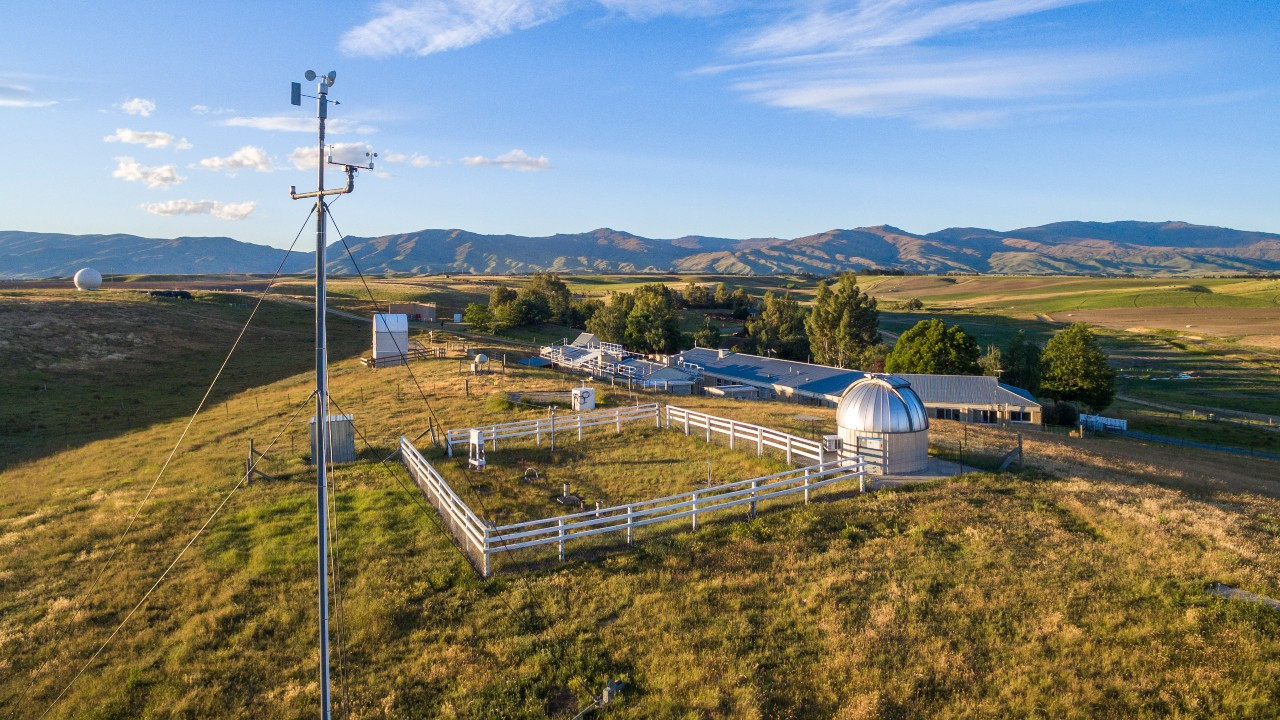Towards a better understanding of our climate


Image: Dave Allen, NIWA
The data and insights highlighted in this report demonstrate some of the physical changes and broad-scale effects that are already being observed in Aotearoa New Zealand (see chapter 3: Changes in our climate and environment are being observed). The observations of increasing temperatures and changes to rainfall show that climate change is no longer a far-off threat but is affecting us and our environment here and now.
This report also sets out the sources of New Zealand’s greenhouse gas emissions that are contributing to climate change, and the high-level forces that are driving emissions (see chapter 2: Our activities are driving emissions). Our activities and the choices we make every day can produce or reduce greenhouse gas emissions. At all levels from central to local government and businesses to communities, iwi, families, and individuals, we are continually making decisions that affect the climate.
Knowledge of Earth’s systems and how they affect our lives is progressing, with further data collection, analysis, and investigation continuing across a wide range of subjects. Using tools like climate models, scientists can estimate the most likely range of impacts for different aspects of climate change. Projections from these models show how different emissions scenarios for the future are likely to cause further changes to the climate, with impacts on our environment, society, and culture, and ultimately on our wellbeing.
While our understanding of the climate is comprehensive, it will never be perfect. The climate system itself is complex, and so are the ecological and human systems it interacts with. There will always be some uncertainty surrounding any decision related to climate change.
We come across uncertainty in the decisions we make every day, from the mundane (can I get away without a jacket today?) to the life altering (should I start a new career?). While we rarely have all the information we need to act with absolute certainty, we also rarely have so little information that we cannot make a decision.
Part of the enterprise of science is to understand variability and uncertainty so what is significant can be distinguished from the noise. Science recognises that every measurement carries an uncertainty, and methods such as statistical analysis can be used to manage it for decision-making.
Our understanding has advanced to a point where it is straightforward to use our knowledge of uncertainty and risk to make many decisions. For example, taking into account the risk of where flooding is likely to occur more regularly in the future can help us make better decisions about where to build new roads.
The ways we choose to act require careful planning and evaluation well in advance of being needed. This can help make the best use of the time and resources that are available now, and because some interventions take a long time to have an effect. Well-planned actions can also increase the openings for other benefits to be incorporated. These could include new economic opportunities or reduced emissions of greenhouse gases. If left too late, the options can be limited and more costly.
Good planning can also help ensure there are no unintended consequences from the actions we take today. Planting pine trees to store carbon, for example, is often cited as an effective strategy for reducing carbon dioxide in the atmosphere. But if the trees are planted in a place where rising temperatures will increase the risk of extreme wildfires, this may not be a sensible long-term strategy for that location.
An improved understanding of how our climate is likely to change, and the effects of those changes, can also help us to be more resilient. This information is especially important at a local level, where adaptations to climate change need to be designed and implemented by the communities affected.
We can develop flexible and innovative plans and responses that allow us to adjust and adapt as the future plays out. The challenge is making the right decisions today that give the next generation the same opportunities to make the right decisions tomorrow.
In New Zealand we are fortunate to have a vast repository of local knowledge – mātauranga Māori. It dates back hundreds of years and is therefore an invaluable source of information for identifying changes in te taiao (the environment) and helping us understand how it is changing (see Tohu and maramataka: observing and tracking changes in the environment).
Mātauranga Māori and science are independent views of te taiao and use different methodologies to progressively add observations and knowledge over generations. Their relationship has been likened to a braided river with channels that cross and uncross on the journey downstream (Macfarlane & Macfarlane, 2019). When the ‘channels cross’ there is an opportunity for these knowledge systems to come together and provide new ways of thinking and alternate pathways to explore.
There are challenges to bringing mātauranga Māori into the environmental reporting system, which has traditionally focused on the collection and analysis of quantitative data. This report has gone further than previous reports in the Environmental Reporting series in showing that mātauranga Māori can relate and offer different perspectives on data collection, use, and wellbeing. More listening and more work is needed to further combine these views of te taiao.
The complexity of the climate system means it can take time for observations related to climate change to be confirmed statistically. For infrequent events like extreme rainfall, it can take several decades for clear signals to emerge. Robust observation systems and long-term datasets are therefore crucial to provide reliable, quality data. This allows us to detect and understand the trend of important changes. Quality data is also crucial for understanding how actual observed changes are tracking with climate projections and whether any adjustments in the projections are needed.
New Zealand has some of these long-term data sets as part of the data system. For example, coastal sea level and air temperatures have been measured since around the turn of the 20th century. Carbon dioxide concentrations have been measured at Baring Head since 1972. Data sets like these that span 50–100 years are invaluable national assets.
The need for a more connected environmental monitoring system is highlighted by the chain of links from our activities and emissions to the changing climate, to impacts on our social, environmental and economic systems. New Zealand is already on a journey to improve environmental monitoring and ensure data gathering is prioritised and consistent across the many communities that observe, collate, and steward data.
The journey requires a shift in the system and a holistic understanding of the way environmental data is collected in New Zealand. It is essential that we understand:
The challenges go well beyond this report, but better data is critical for ensuring a more useful, relevant, and robust evidence base for conversations about climate change and the environment. The Parliamentary Commissioner for the Environment, the Ministry for the Environment, and Stats NZ agree that systemic changes are needed to advance environmental reporting.
Further research to understand the links between climate change and wellbeing at local, regional, and national scales would also be beneficial. This knowledge would help us to better prepare and respond to the ways that climate change will impact our lives.
Beyond traditional data collection approaches, there is also significant potential to use new technology, such as drones or low-cost sensors. The popularity of smartphones also means that many of us now walk around with a data capture device (the humble camera and GPS receiver) wherever we go, and can be active participants in gathering scientific data.
Citizen science initiatives (that often use smartphones to collect data) have a much larger reach than traditional monitoring because many more people can be involved. Those who are involved also learn more about the places where they live by making observations. Citizen science collaborations can also increase the trust in data and findings and create a stronger base for decision-making (see King tides show possible future sea levels).
Climate change will affect all aspects of our environment and our lives. The scale and complexity of the challenge will require the use of all the knowledge available to us. There is a need for social scientists to work more alongside biologists, modellers, and other physical scientists. Going further than working across disciplines, however, the size and complexity of climate change offers an opportunity to draw on all knowledge systems.
The highest of all tides are called king tides. They occur a few times a year when the orbits of the Earth, sun and moon align and create high tides that are even larger than spring tides. King tides can cause flooding in the same places where the higher sea level caused by climate change would be expected to occur. Since king tides are actual events, they provide a more accurate picture of how water moves across a landscape than computer models.
The King Tides Project was begun to document the effects of king tides around the world to help planners, scientists and policymakers study and prepare for future sea-level rise. The Auckland King Tides Project enables local people to share their photographs of places around the city during king tides, so others can see the effects.
The king tides of today may well become normal sea level in the future. Documenting these currently rare events is helping to demonstrate what raised sea levels would be like in New Zealand. The information gathered is also beginning to be used by councils and organisations such as surf clubs that have buildings, roads, and other infrastructure close to the coast.
See the King Tides Auckland website for more information.

Image: King Tides Auckland

Towards a better understanding of our climate
October 2020
© Ministry for the Environment